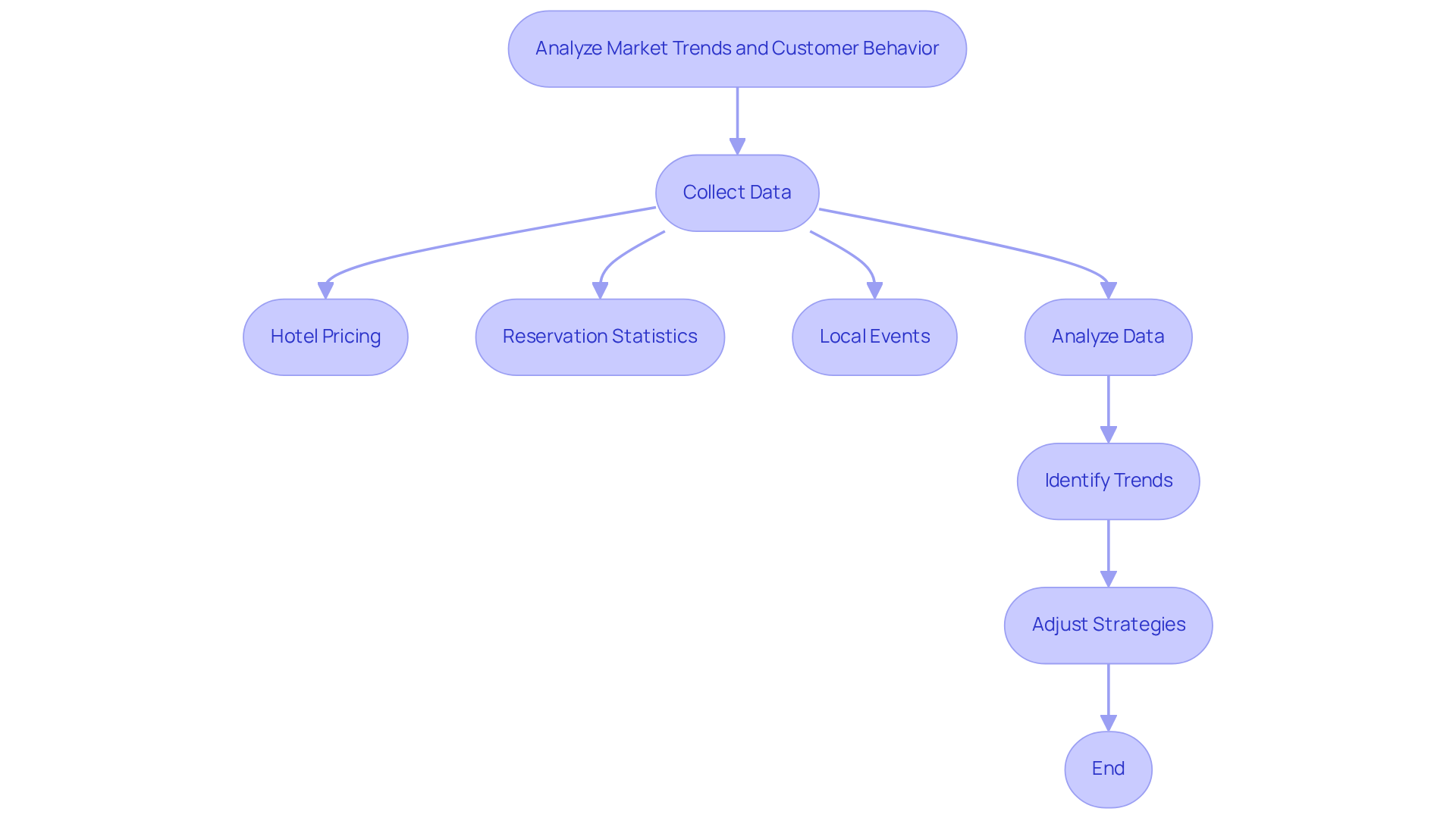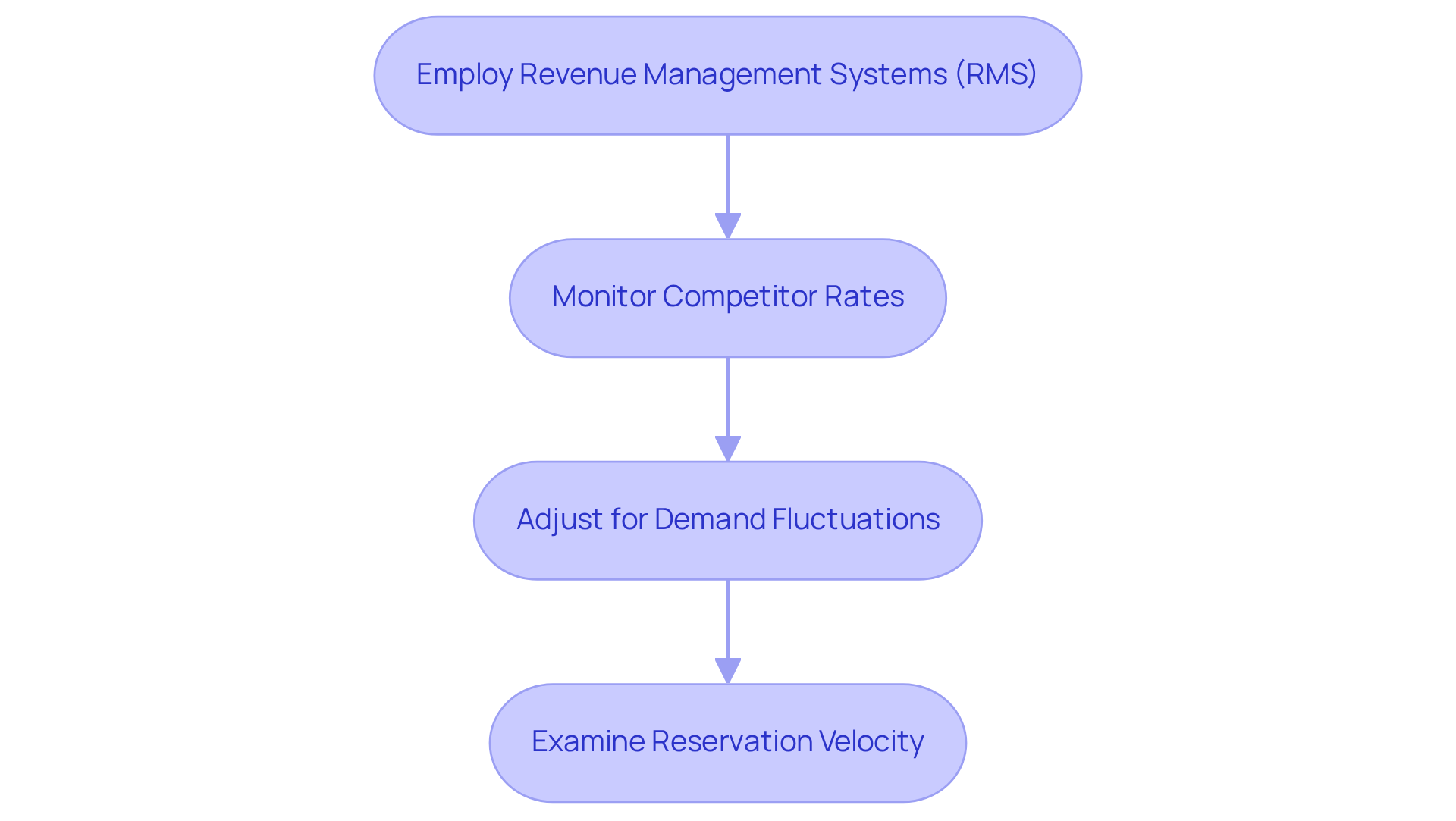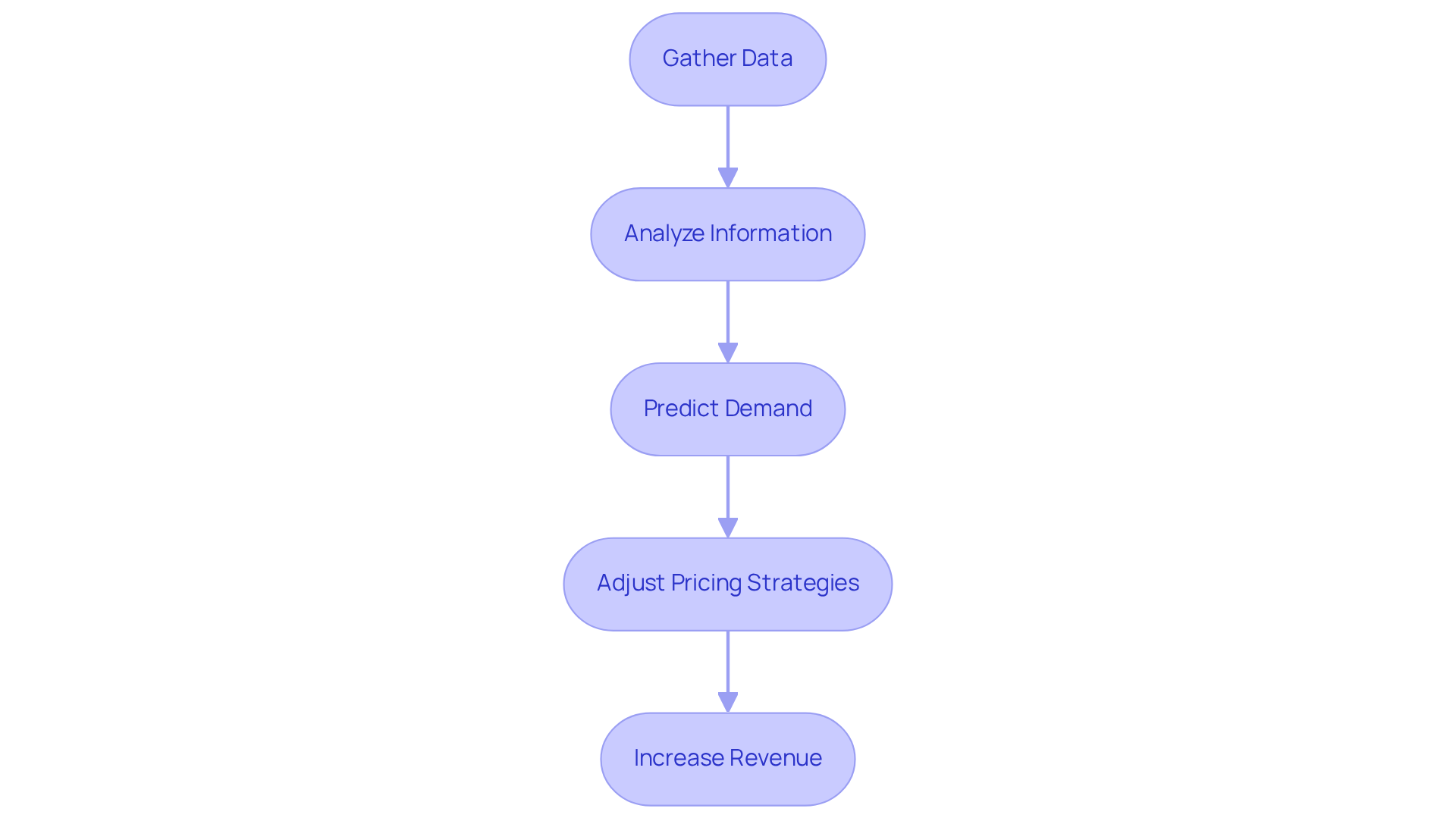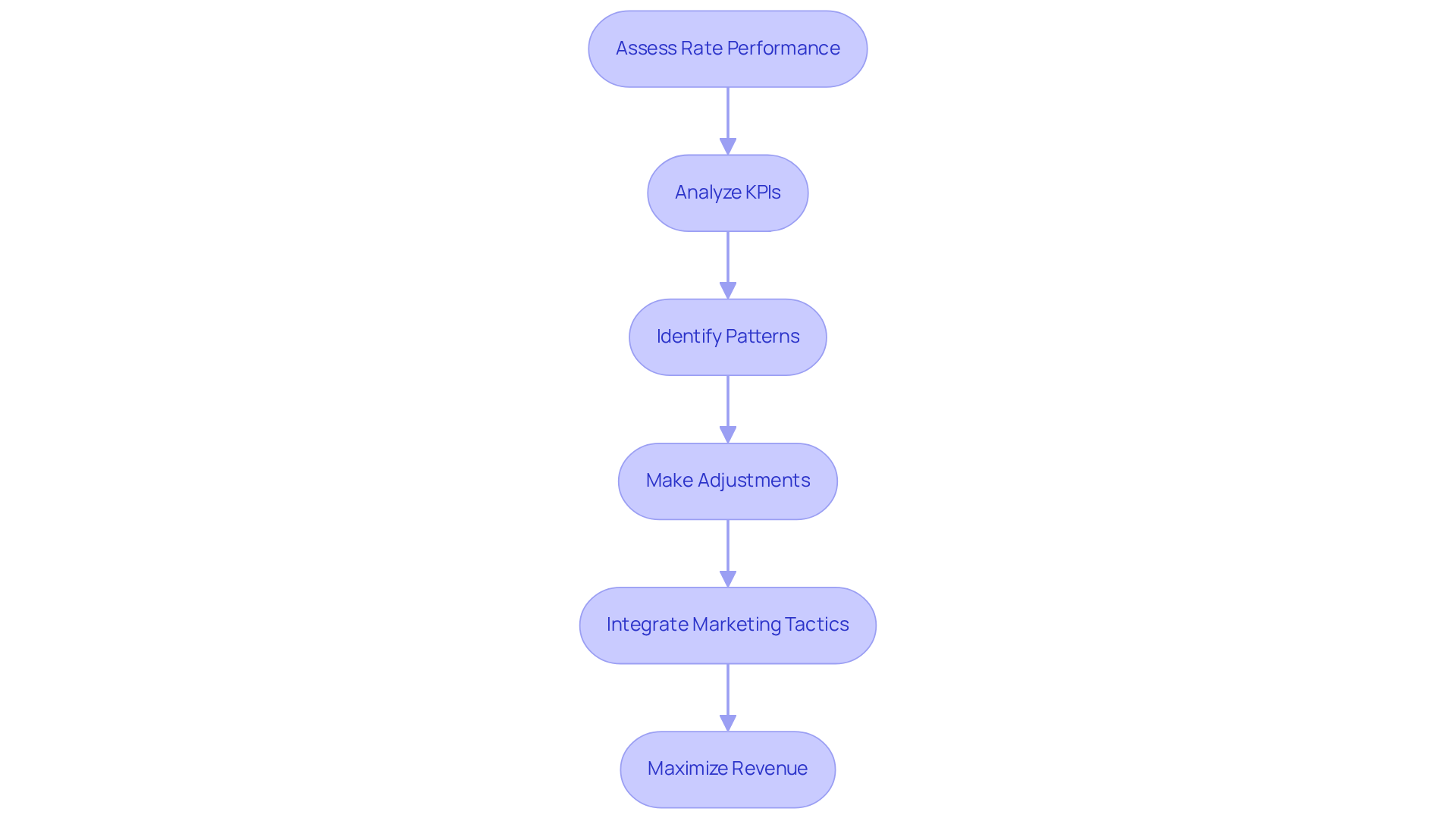Effective hotel pricing optimization is crucial for enhancing occupancy rates and increasing revenue. Strategies such as:
are essential. By utilizing data-driven insights and flexible pricing models, hotels can adapt to market conditions and customer preferences. This adaptability not only supports revenue growth but also demonstrates the importance of responding proactively to the evolving landscape of the hospitality industry.
In an industry where every dollar counts, optimizing hotel pricing can be the decisive factor between a fully booked property and vacant rooms. As market dynamics shift and consumer preferences evolve, hotels face a complex landscape of pricing strategies that must be navigated to maximize revenue and occupancy rates.
How can accommodations effectively leverage data and market insights to refine their pricing models and maintain a competitive edge? This article delves into four essential strategies for hotel pricing optimization, offering actionable insights designed to help establishments thrive in an ever-changing hospitality environment.
To effectively assess market trends and consumer behavior, accommodations must leverage a diverse array of information sources, including hotel pricing, historical reservation statistics, and local events. Tools such as Google Trends and social media analytics yield valuable insights into customer preferences and seasonal demand fluctuations. For instance, should data reveal increased interest in an upcoming festival, accommodations can strategically adjust their rates to capitalize on the anticipated surge in reservations. Furthermore, segmenting customers based on demographics and reservation patterns enables tailored hotel pricing strategies that resonate with different guest profiles, ultimately enhancing occupancy rates and revenue.
Consider a real-world example: An establishment situated in a tourist-heavy area observed a notable increase in searches for family-friendly accommodations during the summer break. By adjusting their rates and introducing family packages, they achieved a remarkable 30% boost in bookings during that period.

Adopting flexible cost strategies is essential for accommodations seeking to boost their income. This approach to hotel pricing involves adjusting room rates based on real-time data, including occupancy levels, competitor pricing, and local events. To effectively implement dynamic pricing, hotels should consider the following steps:
A successful implementation of flexible rates can be exemplified by a hotel chain that utilized an RMS to adjust fees based on reservation pace and competitor analysis. By effectively managing their pricing strategy, they achieved a remarkable 15% increase in revenue during peak periods. This case illustrates the potential of flexible pricing as a powerful tool within a broader marketing strategy to enhance reservations and revenue management.

Utilizing analytics is essential for hotels, as it involves gathering and examining various information points, including hotel pricing, historical reservation trends, customer demographics, and market conditions. By leveraging advanced analytics tools, hotels can predict demand and identify opportunities related to hotel pricing. For instance, predictive analysis enables accommodations to forecast reservation trends based on historical data, allowing them to establish competitive pricing strategies well in advance.
A compelling case study of a boutique establishment that embraced data analytics reveals that by analyzing previous occupancy rates and customer preferences, they successfully forecasted peak booking periods and adjusted their rates accordingly. This strategic approach resulted in a remarkable 20% increase in revenue during high-demand periods.
In conclusion, the integration of analytics not only enhances forecasting accuracy but also empowers hotels to optimize their pricing strategies, ultimately driving profitability.

To sustain a successful rate strategy, accommodations must implement a robust system for assessing their rate performance. This involves a thorough analysis of key performance indicators (KPIs) such as occupancy rates, average daily rates (ADR), and revenue per available room (RevPAR). By frequently analyzing these metrics, establishments can identify patterns and make necessary adjustments to their rate strategies.
Furthermore, integrating effective accommodation marketing tactics is crucial for boosting reservations alongside fee modifications. For instance, if an accommodation notices a decline in occupancy during certain months, it could introduce promotional rates or packages, supported by targeted marketing campaigns, to attract guests during those periods. By continuously evaluating their pricing strategies and aligning marketing efforts, hotels can ensure they remain competitive and maximize their revenue potential.

The effectiveness of hotel pricing optimization relies on a strategic approach that integrates market analysis, dynamic pricing, data analytics, and continuous evaluation. By comprehending customer behavior and market trends, hotels can customize their pricing strategies to align with demand, ultimately boosting occupancy and revenue. This multifaceted strategy empowers accommodations not only to respond to market fluctuations but also to proactively shape their pricing structures for sustained profitability.
Key strategies outlined include:
Each of these strategies contributes to a comprehensive pricing framework that enables hotels to remain competitive and responsive to shifting consumer preferences and market conditions.
In a rapidly evolving hospitality landscape, the significance of effective pricing strategies cannot be overstated. Adopting these best practices positions hotels to maximize their revenue potential while enhancing their ability to attract and retain guests. As the industry continues to navigate new challenges and opportunities, staying informed about emerging trends and leveraging data-driven insights will be crucial for achieving long-term success in hotel pricing optimization.
What information sources should accommodations analyze to assess market trends and customer behavior?
Accommodations should leverage hotel pricing, historical reservation statistics, local events, Google Trends, and social media analytics to gain insights into customer preferences and seasonal demand fluctuations.
How can accommodations adjust their pricing based on market trends?
Accommodations can strategically adjust their rates in response to data indicating increased interest in local events, such as festivals, to capitalize on the anticipated surge in reservations.
Why is it important to segment customers based on demographics and reservation patterns?
Segmenting customers allows accommodations to create tailored pricing strategies that resonate with different guest profiles, which can enhance occupancy rates and revenue.
Can you provide an example of how adjusting rates can impact bookings?
Yes, a hotel in a tourist-heavy area noticed an increase in searches for family-friendly accommodations during the summer break. By adjusting their rates and offering family packages, they achieved a 30% boost in bookings during that time.
Transform your group booking strategies with Lights On and watch your occupancy soar.